Introduction to the Grand Egyptian Museum
A New Era for Egyptian Heritage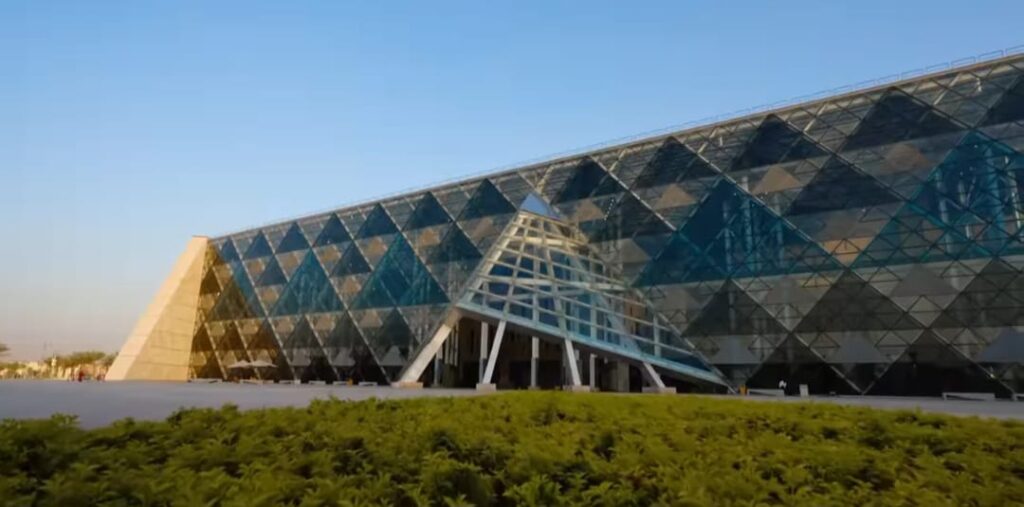
Grand Egyptian museum (GEM) is a bold initiative as far as the cultural history of Egypt is concerned. It is regarded as one of the biggest archeological museums in the world and is therefore meant to showcase Egyptian rich heritage and the ancient civilization in a magnitude never seen before. The museum introduces one more era of protection, demonstration, and the understanding of the grandeur Egypt has imposed on the history of human race, the Pharaonic and Greco-Roman history. Its design is aimed at the principles of cultural conservation and innovation in Egypt.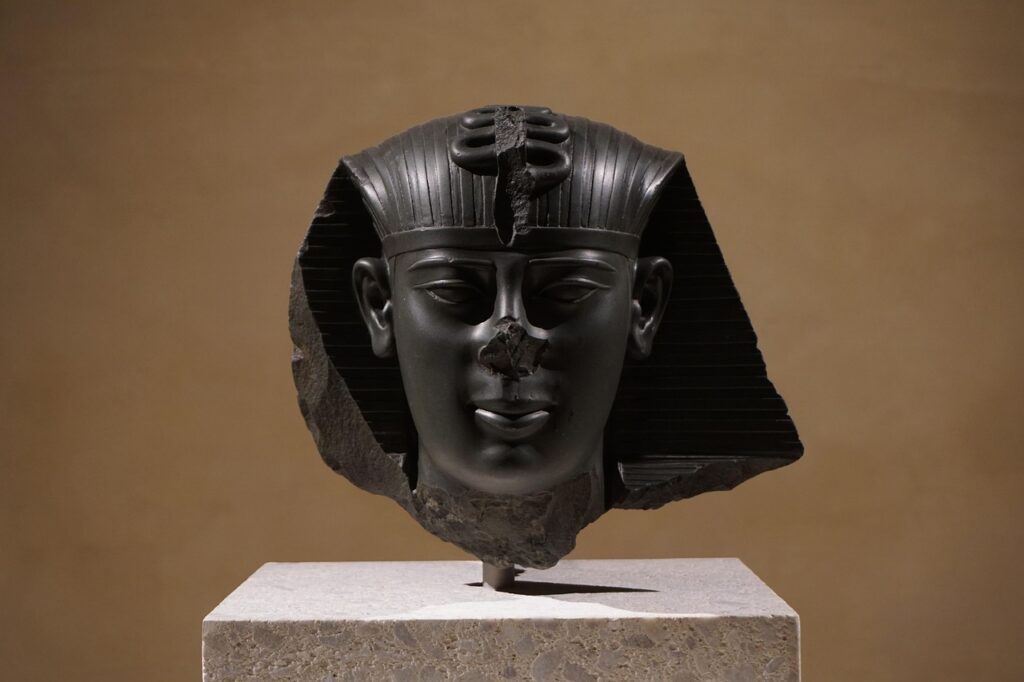
Why the Grand Egyptian Museum Matters Globally
GEM is not a museum of the country only, but a cultural center of the entire world. It houses over 100,000 artifacts with many of them never displayed in public, it offers scholars, researchers and visitors an incomparable access to the Egyptian treasures. The museum has united the past and present and this has given people living across the globe to have a window to contact the Egyptian legacy. It serves as a platform of global collaboration in archeology, restoration, and conservation, which could contribute to the global environment in the history of mankind.
Location and Accessibility: At the Foot of the Great Pyramids
GEM is well situated within the Giza surroundings giving the tourists the breath taking views of the stunning pyramids. Its location is linked with the narrative of the museum, connecting the things on display with the identical landscape, which generated the ancient Egyptian civilization. The museum can be easily accessed in areas around Cairo and Giza and infrastructure to receive both local and foreign tourists is there. The tourists can have a smooth transition between the pyramids and the modern museum and this constitutes a complete experience in the life of Egypt.
History and Vision Behind the Museum
The Concept and Planning Stages
The idea of the Grand Egyptian Museum was first invented in the early 2000s, when it was decided to centralize all the archaeological compositions of Egypt in one single and big and modern structure. As it was imagined, they should create the space that would be able to hold the delicate artifacts and offer the visitors the interactive, modern and educational experience. The architectural, historical and archaeological work of architects was directed at ensuring that the museum would reflect the transparency of the ancient Egypt and the modern innovation concurrently.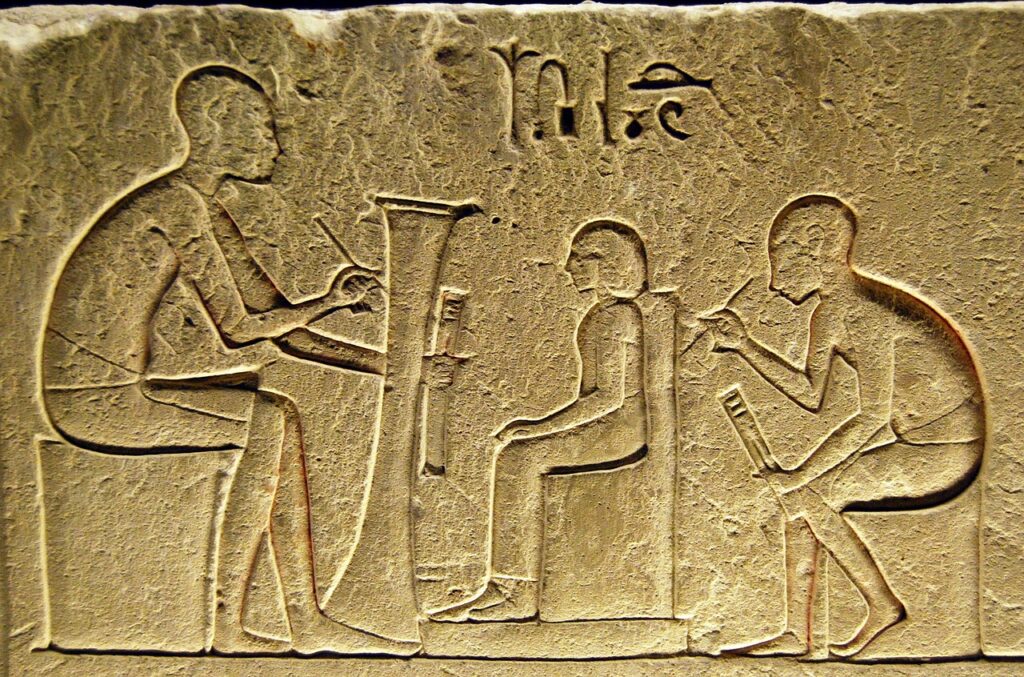
Construction Timeline and International Collaboration
This construction began in 2002 and involved very many collaborations with overseas experts. The construction of a strong structure that would hold the fragile artifacts was partially the responsibility of the world engineers and designers. It consists of the use of modern technology in managing climate, conserving and ensuring security. This museum has been forced to undergo a number of challenges including logistical, environmental limitations just to emerge as a model project of international scope.
Egypt’s Dream of Preserving the Past for the Future
Egypt has never been a country that attempts to keep its heritage but on the other hand bring it to the next generation. GEM is a symbol of such a dream and this house of transition of the thousand years past to the new world. It is where Egyptian youths can learn about their past, and world can be impressed by the richness and prosperity of the Egyptian culture. The museum is a national pride message through preservation and the effort to perpetuate Egyptian culture.
Architectural Design and Structure
A Fusion of Modernity and Antiquity
The Grand Egyptian Museum is an impressive blend of the new trends and old triggers. The architects also desired creating a structure that would relate to the history of Egypt and embrace the contemporary building and design. The outside of the museum is also the expression to geometric care that draws its inspiration on the pyramids and the interiors are designed in such a way that they provide flowing narrative experience over time. The mixture of the old and the new allows the tourist to sense the environment of ancient Egypt in a modern context; a little more quintessential to the millennia between the period of the Pharaonic society and the modern society. The museum can be discussed as monumental and friendly with its great uninterrupted spaces, straight lines, and choice of the materials which can be described as simple. The entire design such as grandiose staircases, clever use of natural lighting, all of which are supposed to highlight the historical significance of the artifacts and also provide a decent experience simultaneously. The architectural firms in the whole world collaborated with the Egyptian architects to ensure the building is not in conflict with the Egyptian culture and the surroundings. The design and the size of the museum also adds to the fact that it is one of the largest archeological museums in the world which is capable of hosting giant exhibitions and ensure the facilities to thousands of tourists in a day.
Sustainable and Symbolic Design Elements
Sustainability is among the pillars of the GEM architecture. The design will also comprise of solar panels and eco friendly climate control systems, and ultra-modern water management systems that will reduce the environmental footprint and safely preserve delicate artifacts. Another point that the museum also highlights in its symbolism is that all the angles, corridors and facades all refer to the ancient Egyptian concepts. The triangular shapes are similar to the pyramids and the maintenance of the hieroglyphic in the application of the linear patterns. The limestone, glass and steel materials are not only chosen because of its material strength but also because of its similarity of natural texture in the past Egyptian buildings. The interior lighting design offers a dynamic effect of a natural motion of the sun and offers a changing environment which depends upon the time of the day. It is also provided with open courtyards and terraces which provide natural ventilation and leisure places which encourage the visitor to pause and reflect on the history that surrounds him/her. This sustainability and symbolism is what ensures that, other than being a cradle of culture, GEM is a prototype of an environmental friendly design.
The Triangular Facade and Use of Natural Light
The triangular facade is the most outstanding in the museum. The coarseness of the lines and the grandiose of the glass facades allow letting the sun come into the interior and illuminate the artifacts without depreciating the artificial light. Its design has enabled it to depict the bulky content of the collections in the natural light and this contributes to appreciation of the craftsmanship and artistry of the past by the visitors. The affiliation of the museum to the pyramids is also depicted in the front since the modern building perfectly merges with the ancient landscape. The enormous atrites may be considered as the wells of lights, which guide the visitors all through the museum without losing the feeling of openness and grandiosity.
Interior Layout: A Journey Through Time
Gem is also organized in chronological manner and thematically portrays the Egyptian civilization. The tourist viewers cross movements of the start of the dynasties, all to the more stable period of the pharaoh nation, and lastly to the later era, with suggestions of cross-cultural exchange and modernization. It has long aisles, glass displays, and engagement stands which allow easy navigation and being dumb to be in the situation. The conservation laboratories and research centers are also included in the design offering the visibility in conservation efforts. It was designed to be the interior as the area is easily accessible, educational and inspiring and any visitor must leave the place with the enhanced understanding of the Egyptian heritage.
Museum Collections and Exhibits
The Treasures of Tutankhamun

The Grand Egyptian Museum possesses the best collection of the artifacts of the tomb of the pharaoh Tutankhamun, which also provides the best understanding of the life and death of one of the most famous pharaohs of Egypt. The museum contains more than 5000 items of jewelry, ceremonial weaponry as well as chariots and furniture with glassed-in boxes, so that the delicate treasures could be preserved and the visitors could have a glimpse of the delicate craftsmanship standing behind the weak treasures. Gold funerary mask of Tutankhamun is the most popular part of the collection which may be discussed as the symbol of the artistic achievement and belief in afterlife of Egypt and faith in spiritual realms. 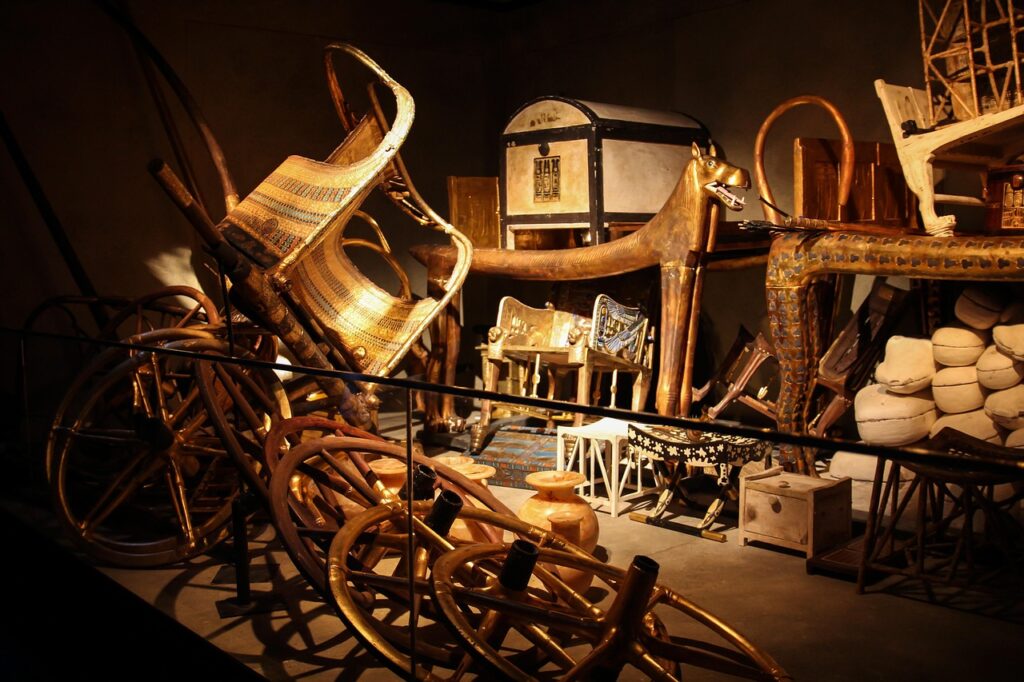 These multimedia guides and interactive displays provide it with a historical background and explanation of the significance of every piece of artifact in the greater contexts of the 18 th Dynasty. The contemporary conservation techniques will ensure a spacious tradition of bequeathing the most subtle of objects to the heirs of the future generations and the states of the art lighting is developed to curb decadence. Such set not only serves to celebrate the reign of Tutankhamun but further takes a step forward in ensuring that Egypt is attempting to preserve its ancient history in an easily accessible form to the rest of the world.
These multimedia guides and interactive displays provide it with a historical background and explanation of the significance of every piece of artifact in the greater contexts of the 18 th Dynasty. The contemporary conservation techniques will ensure a spacious tradition of bequeathing the most subtle of objects to the heirs of the future generations and the states of the art lighting is developed to curb decadence. Such set not only serves to celebrate the reign of Tutankhamun but further takes a step forward in ensuring that Egypt is attempting to preserve its ancient history in an easily accessible form to the rest of the world.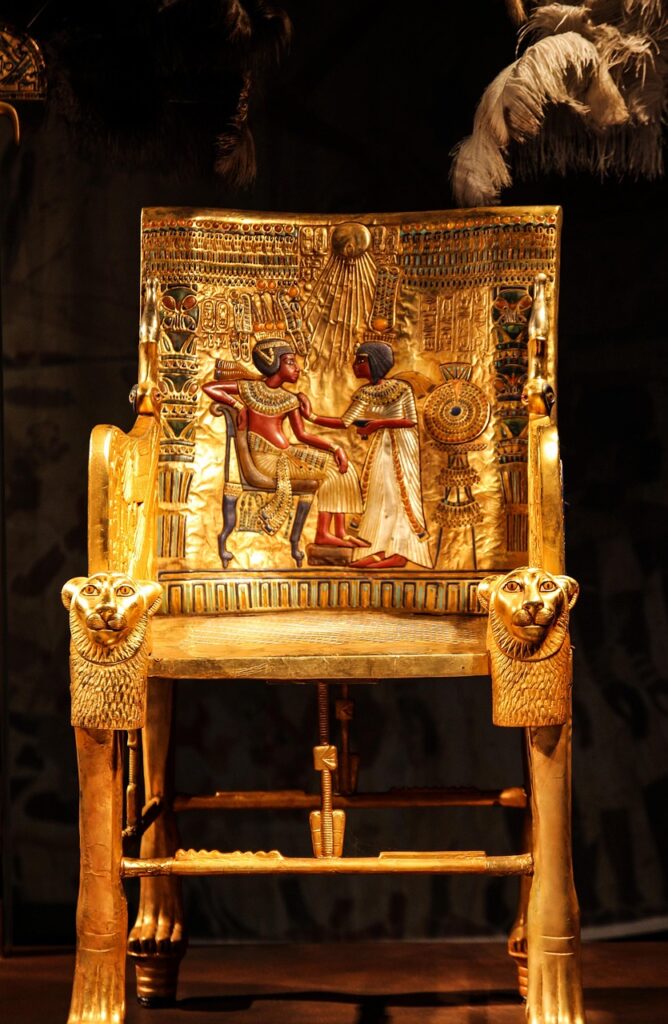
The Grand Staircase: A Walk Through Egyptian Dynasties
The one of the peculiarities of the interior of GEM is the Grand Staircase which is supposed to be the voyage into the dynastical history of Egypt. The visitors to the museum ascend to the open staircase which is sweeping upwards as they observe forward displays chronologically narrating the Egyptian culture, art and governance. The phases of the staircase are separated by others, by an Old Kingdom and its monumental architecture to the artistic efflorescence of the New Kingdom. Sculptures, reliefs and inscriptions are placed along the staircase creating an illusion of a narrative experience. The history of the events is depicted on the large-sized panels and the interactive installations and digital projections cause the visitors to discuss the material even as opposed to unanimous exhibition pieces. The staircase can also serve its practical purpose and be used in many ways to provide the connections between the different levels of the exhibition and to make the impression of continuity and sustained story. It is an ingredient of the philosophy of the museum that blends architecture with historical narration.
Mummies, Statues, and Sacred Artifacts
GEM holds a splendid collection of mummies, sculptures and religious objects that represent the life of the spiritual and social existence of the people of ancient Egypt. The royal mummies are kept in special rooms, the temperature and humidity of which is strictly controlled so that the remaining of the mummies could be preserved. Both of the sarcophagi and statues of life size represent the religious activities and art of the epoch in question. Tourists get to know the faiths of demise, existence after death and domain of gods. By each artifact, one has the descriptions and online guides that give some background as to what is being symbolized, what type of materials were involved in this instance, and what historical meaning might be attributed to the item. The set is organized in a manner that shows the connection between the different periods and brings forth the continuity and change over the period of thousands of years.
Conservation and Restoration Laboratories
The museum boasts of state of the art conservation and restoration laboratories and this means that the professionals are able to perform the restoration of the more delicate artifacts in front of the visitor. These are laboratories of modern technology and purify and repair the ancient things and soften them through the saving of their primal nature. Well marked walls provide some informative pain about the scientific methods used including the X-ray procedure and the three dimensional scan. Such a mix of research and demonstration points to the service that the museum takes the form of a living center of knowledge and not a demonstration area.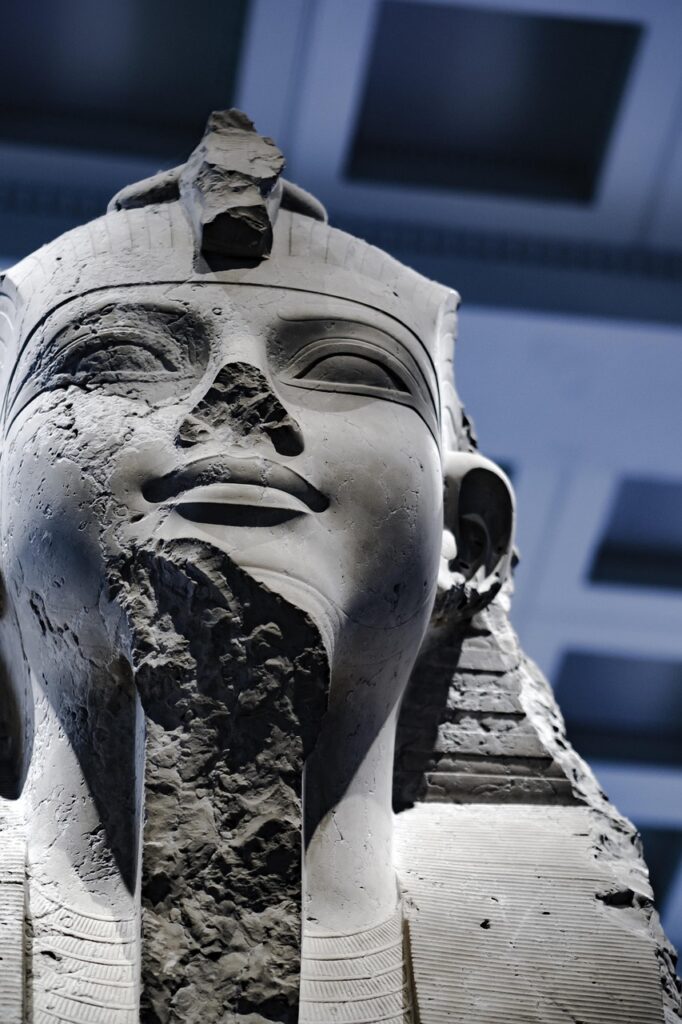
Digital Technology in Exhibitions
GEM has put in place the use of the latest digital technology to redefine the experience of the visitors. The interactive screens, augmented reality screen, and virtual tours allows visitors to understand the specifics of the objects, recreate the vanished buildings, and understand the historical contexts. The technology is quite accommodative since it would be involved in accessing every one with multilingual and customized interfaces based on age groupings. It makes ordinary displays provide an organic experience and educational stimulators to make the ancient Egypt to the present generation.
Visitor Experience
Educational and Interactive Spaces
The Grand Egyptian Museum offers much learning and interactive space that is attractive to the older generation as well as children. The classrooms, workshops and places of activity enable the students, family and scholars to comprehend the ancient Egyptian civilization in an alternative manner, in contrast to the traditional expositions. There are hands-on activities, such as artifact replicas, hieroglyphic writing stations, archaeological simulation games where visitors may experience how it was like to be part of the Egyptian history. The kiosks and touch screens, which are within the museum and are situated around it but provide elaborate description of the artifacts, dates, history of the dynasties. These rooms will be geared towards making people be curious, observe critically as well as appreciate culture and therefore, they will not only serve as a place of displaying artifacts but they will act as a learning and exploration hub. The learning programs also get updated with the learning and results on an ongoing basis to ensure that long time visitors could always get new and thrilling materials. Its layout consists of elements of active engagement with the visitors being encouraged to explore, ask and connect the ancient Egyptian history personally.
Guided Tours and Multimedia Presentations
GEM also offers wide guided tours of the archaeological historic sites that are guided by professional archeologists and historians. A large amount of explanations is carried out on artifacts, the historical background, and the significance of the various dynasties through these tours. The tours have multimedia displays, which include immersive projections, holographic and 3D recreations of tombs, temples and palaces. They can do thematic tours, such as The Life of Tutancamun or the Religious Practices of Ancient Egypt, or can use mobile applications and interactive maps to do the self-guided tours. The professional support and utilization of digital resources ensure that the visitors peruse the exhibit of the museum in a more complex manner in a multidimensional form, ensuring the maximum amount of education and general engagement.
Facilities: Cafés, Gift Shops, and Cultural Areas
GEM provides comfortable and interactive amenities like cafes, restaurants, and gift shops, with a view to either make their visit more comfortable and educative. The tourists will be in position to sleep in beautiful outdoor terraces or sample the traditional Egyptian cuisine in the modern dining rooms. Gift shops: They have imitations, books and souvenirs that can be taken home by the customers. Cultural spaces are dynamic and enable one to see temporary exhibitions, performance and lecture not only a statual display but an energetic one. These facilities offer the tourist experience that entails learning, recreation as well as cultural exposure within a single location.
Accessibility for All Visitors
GEM is adapted fully to be accessible and the ramps, lifts and paths are designed to accommodate individuals who have problems moving about. Audio guides are also there, touch screens, graphical braille signages and other visual impairs enable the visitor who is impaired or impaired with hearing to be able to extract something out of the museum. The concept of inclusive design is also used on family zones and rest zones where all people will enjoy and feel comfortable spending time.
Family-Friendly Programs
The museum offers family based programs, workshops, interactive story telling as well as workshops which are put in a manner that are kid and teenager friendly. Young visitors are entangled to accomplish guided treasure hunt, practical craftworks and educational games that inform them about the ancient Egyptian culture in very exciting ways. The programs encourage the exploration by the users hence the museum makes sure the generations learn and get fun.
The Grand Egyptian Museum and Tourism in Egypt
Boosting Cultural Tourism
The grand Egyptian museum in which the tourists visit the museum is one of the highest contributors of cultural tourism in Egypt. It is in addition very near to the Giza Pyramids and hence making it a general tourism attraction site where one could view the old monuments and the new exhibition in a single visit. GEM holds that keeping the numerous archaeological treasure of Egypt at one place that is easily accessible, they will be in a position to have a longer visit to the place, communicate more with each other and appreciate and enjoy the Egyptian history. The business of the locals such as tour operators, hotels and local businesses is improved by the tourist traffic in such a manner that as a country, Egypt is known throughout the world as a business destination due to cultural enrichment. These special displays, seasonal niche shows, interactive programs also increase the tourism attraction levels would give incentive to first time visitors and also the regular customers to patronise the museum multiple times.
Economic and Cultural Impact
GEM has also become significant in Egypt in regards to the economy and culture. Some of the job creating activities include construction, conservation, research, hospitality and museum operations. The museum also encourages international relationship with regards to archaeology, education and heritage conservation and Egypt is a world heritage in terms of management of cultures. Economically speaking, the immediate effects of increased expenditure by the travelers to the community will be prosperity of the locals and due to the research initiatives installed by the museum, it will promote the growth of science and academics. GEM, culturally, strengthens the national identity of Egypt because it depicts the achievements of Egypt in the ancient days, national pride in the past, and stimulates creative activity of the present day.
A Hub for International Exhibitions and Research
GEM shall be an international research, exhibition and work center. There are available globally to scholars artifacts, which can be studied, the museum has traveling exhibitions, and thematic exhibits. The conservation projects are performed in the same location through the complex laboratories which facilitates in the conservation activities across the globe. Through educational programs, workshops and conferences this gives the international researchers access to the Egyptian scientists which is an interactive platform in information transfer. This focus on collaboration proves to ensure that besides being a national heritage treasure GEM is also an international archaeological and historical research center.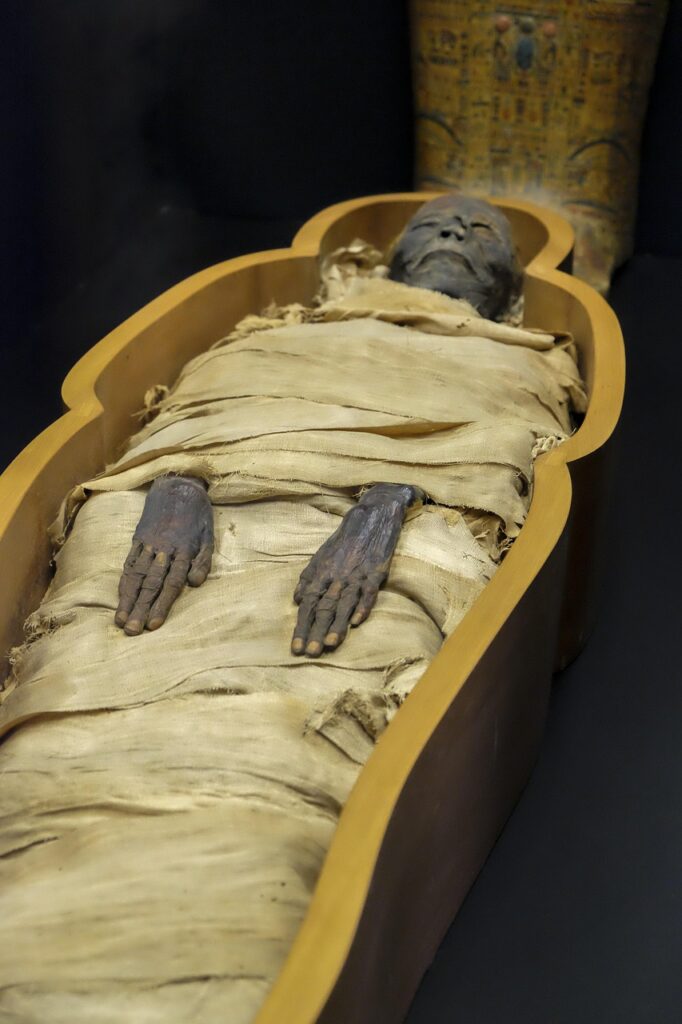
Connecting the Past with the Future of Egypt
The museum is a linking of the historicity and the contemporary informative innovative because it links the rich history in Egypt and its present cultural and learning objectives. It encourages application of technologies in preservation, display and interaction with the visitors and proves that technological progress will not obstruct historical conservation. GEM promotes the engagement of the youth in the process of archaeology and heritage management, training the future scientists, curators, and culture manifests administrators. The museum connects the past and the future thereby transforming the history of Egypt to a living and living force on both the society, education and culture around the globe.
Future Plans and Global Significance
Upcoming Exhibitions and Collaborations
The Grand Egyptian Museum has plans as well in the future exhibitions as collaborating with foreign countries. It attempts to arrange thematic exhibitions, which are dedicated to particular periods and dynasties or particular aspects of the Egyptian civilization and allow the visitors of the country to have fresh impressions of the ancient culture. Collaborations with large Museums in different regions of the world such as the partnerships with Europe, Asia as well as North America will support travelling exhibitions, research projects as well as the exchanges of artifacts. This is not just that the programs advance the scope of the museum but also the Egypt as a contributor to the global heritage protection. They will also make virtual showcasing wherein viewers in different parts of the world will be able to visit the exhibitions that GEM offers online, which will further help increase the interest and accessibility.
The Museum as an Educational Center
GEM can also be envisioned as an educative center other than an exhibition centre. It will hold environmental seminars, workshops and training to students, scholars and those engaged in the study of archaeology, conservation and museum studies. They will also equip the talented young minds of the Egyptians with knowledge through educational programs besides boosting the knowledge dissemination on an international scale. The teacher and educator programs will provide the channel of incorporating the Egyptian history in the curriculum that would improve learning at different levels. Education is one of the missions of the museum resources and it ensures that GEM is not a museum where the reasons to preserve artifacts and libraries, work laboratories, and digital archives make the company a living institution of learning and innovation.
A Symbol of Egypt’s Cultural Renaissance
GEM is not only a museum, a relic of a renaissance in the Egyptian culture, significance to the whole world. The museum depicts the efforts of the nation to present its customs, preserve the ancient heritage on the one hand, and illustrate their cultural identity on the global level on the other. It constitutes the national pride, creativity and compliance with the foreign standards in archeology and museum care. GEM as cultural heritage site is used to stimulate the Egyptians and visitors to visit to view the greatness of the ancient culture and its implementation in the current world. This consistency in its expansion, research practice, and training programs imply that the museum will still dominate the culture of new thoughts and ideas globally besides defining the role of Egypt as a guardian of the human history.
Conclusion
A Living Monument to Human Civilization
The monument, the Grand Egyptian Museum, breathes life in the face of the ancient Egyptian culture, its art, and Bayatness. It summarizes years of history, millennia of the genesis of the dynasties, the late Pharaonic epoch, and it is doing so in a manner that people can readily grasp nowadays. The massive collections as well as the experience interactivity of exhibitions and the absorbing nature of narratives within the museum causes the historical objects to be transformed into the living lessons of human resourcefulness, religiousness and cultural persistence. Holding and displaying these treasures, GEM allows the visitors to witness with their own eyes how advanced the ancient societies were, how much they were able to invent and demonstrate how much the old-time world influences the contemporary culture. Not only it is a museum, but also the way to connect the human race with their common past, it is to understand and manage to make people interested in every person who visit its halls.
Why Every Traveler Should Visit the Grand Egyptian Museum
The visit to a Grand Egyptian Museum is a special occasion to any scholar or general who wants to know more about history, culture and art. Being near the Giza Pyramids, it is favorable in terms of having a complete tour to the historic days of Egypt and the state-of-the-art exhibits provide the historical setting, detail information and the interactive learning points of view. Under such conditions that give people an opportunity to choose and save the material to their future generations, tourists will be able to see the wonders of Tutancamun, the royal mummies and the art of religious objects. Over the artifacts, the learning activities, the multimedia guides and even the signs and interactive halls make the museum appealing to the young and even the old to make the experience worth remembering too enjoyable and memorable. Tours and events, guided tours and workshops will assist every visitor in an appropriate way to associate himself/herself to the ancient Egyptian civilization. It is not an ordinary cultural vacation destination, but healing the past of the Egyptian civilization, showcasing its magnificent heritage and historical evidence the eternal appeal of one of the most interesting civilizations in the world as well. Every single guest who had an opportunity to go out of GEM returns lightheaded, and motivated and admires even more the cleverness and the souls of those who formed our world long thousands of years ago.